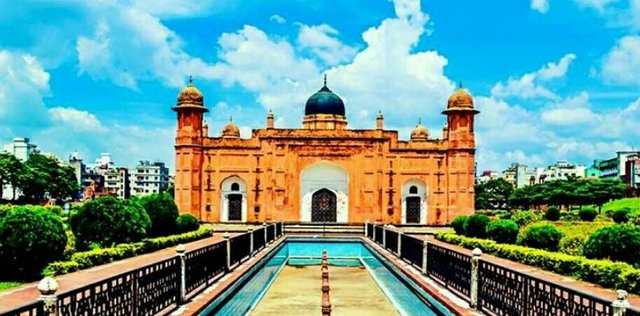Lalbagh Fort - A Historical Place In Bangladesh

The capital of Dhaka is standing gladly along the banks of Buriganga River in the southwest piece of the capital, Lalghad Fort (otherwise called Aurangabad post), the seventeenth century incomplete Mughal stronghold. In 1678, Mughal Subedar, the third child of Emperor Aurangzeb, began the development of Muhammad Azam Shah Fort. He remained in Bengal for 15 months. The development of the fortification was not finished when leaving Bengal for the post of Emperor Aurangzeb.
In this manner, Ajay Shah's successor, Shaista Khan was selected as the new Subedar of Dhaka. In any case, he couldn't complete the development of the stronghold. In 1684, Iran's hopeless spouse kicked the bucket of Shaista Khan's little girl here. After the demise of the girl, Shaista Khan kept the development of the post as unsuspected and kept incomplete. Among the three fundamental structures of the Lalbagh Fort, Paribi Mazar is one of the biggest.
After the takeoff of Shaista Khan, the ubiquity of the post diminished as a result of the exchange of capital from Dhaka to Murshidabad. At the point when the Mughals were toward the finish of the kingdom, the stronghold was repaired. In 1844, rather than aorangabad, the region was named Lalbagh and the name of the post likewise progressed toward becoming Lalbagh fortification.
It was trusted that there were three structures (Mosque, Paribi Mazar and Diwan-I-Amu) in the post, which were for some time associated with two entryways and a piece of the harmed safeguard divider. Be that as it may, the archeological bureau of Bangladesh has as of late found the presence of new establishments after exhuming in the stronghold.
There is a tremendous pinnacle in the southwest corner of the mass of the safeguard mass of the stronghold. There were a few structures in the north of the resistance divider, and there was a pleasant garden with wellsprings in the western part. The convenience for the tenants of the fortress was on the eastern side of the western mass of the western dividers, ie southwest of the mosque.
On the south side of the fortification's guard divider, there are five towers of equivalent rise in a similar separation and two towers on the western mass of the safeguard divider. The biggest pinnacle situated close to the fundamental entryway of the southwest. Each pinnacle has a contact with Suranga situated underneath the ground.
The three structures amidst the fortress are: Dewan-I-Ama and Hammam in the east, mosque and Purbibi hallowed places in the west. These three structures are associated from east to west and from north to south through a water channel through the springs.
There is a hammam at the base of this working of Dewan-I-Amara Dotala. Hammam has a water warming framework. Hammam is encompassed by a divider on the west side.
Water tank: Deon-I-Amer has a square tank of water east of which is 71.63 meters in length. It has four stairs in its four corners to get inside the tank.
Parabibi Mazar: Shayesta Khan's little girl Paribiibah's mazar is situated in a square room amidst the fortress. The mazar is secured with an octagonal arch and metal coat. Wrap the inward mass of the holy place into white marble. There are eight rooms encompassed by this room, among which there is a little tomb in the south-eastern corner.
Lalbagh Fort Mosque: This three-domed mosque is situated on the eastern side alongside a water tank.
Then again, the Mughal Prince Mohammad Azam's fantasy isn't as old as it is engraved on the opposite side, then again, every block of this fortress has a history and puzzle. So uninhibitedly, in the event that you don't see the Lalbagh Fort (Aurangabad Fort) you won't have the capacity to come to Dhaka.
Photographer: @nelufareasmin